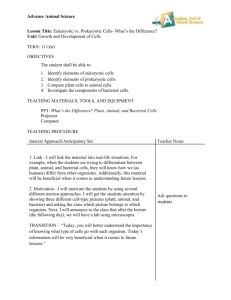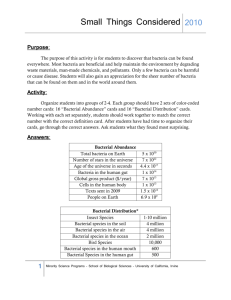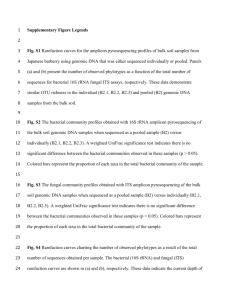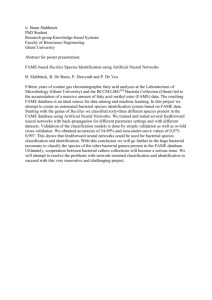Hamilton Regional Laboratory Medicine Program
advertisement
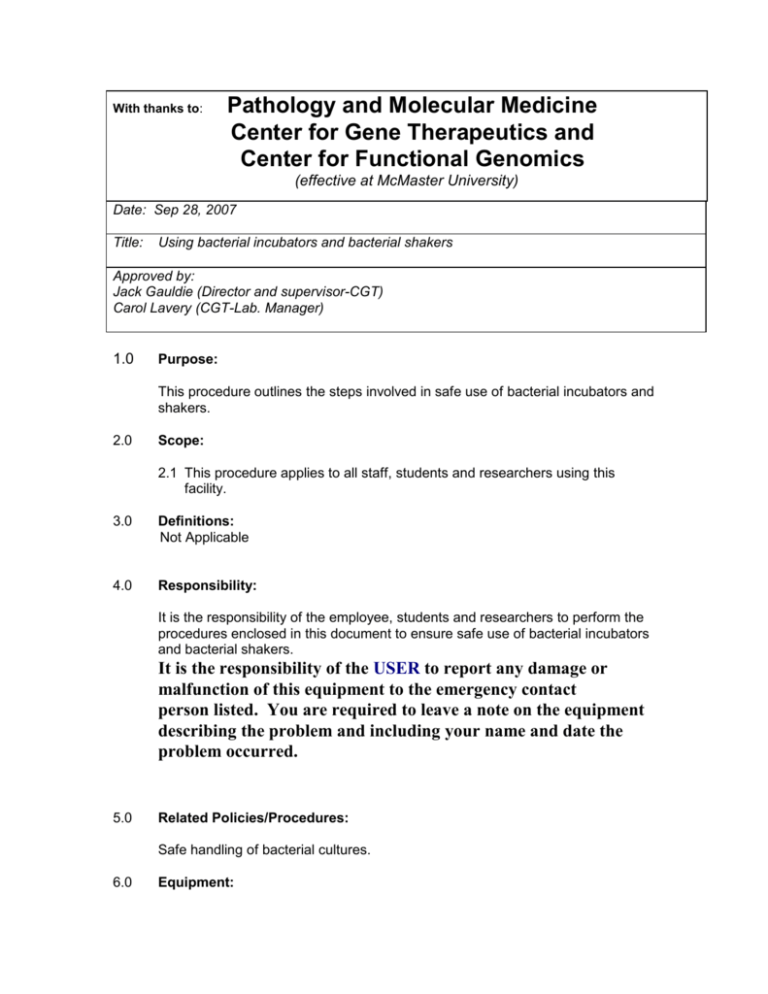
With thanks to: Pathology and Molecular Medicine Center for Gene Therapeutics and Center for Functional Genomics (effective at McMaster University) Date: Sep 28, 2007 Title: Using bacterial incubators and bacterial shakers Approved by: Jack Gauldie (Director and supervisor-CGT) Carol Lavery (CGT-Lab. Manager) 1.0 Purpose: This procedure outlines the steps involved in safe use of bacterial incubators and shakers. 2.0 Scope: 2.1 This procedure applies to all staff, students and researchers using this facility. 3.0 Definitions: Not Applicable 4.0 Responsibility: It is the responsibility of the employee, students and researchers to perform the procedures enclosed in this document to ensure safe use of bacterial incubators and bacterial shakers. It is the responsibility of the USER to report any damage or malfunction of this equipment to the emergency contact person listed. You are required to leave a note on the equipment describing the problem and including your name and date the problem occurred. 5.0 Related Policies/Procedures: Safe handling of bacterial cultures. 6.0 Equipment: Lab Coat Nitrile or latex gloves Closed toe shoes ____________________________________________________________________________ ____________________________________________________________________________ 7.0 Action/Decision-making Framework: _____________________________________________________________________ The following are general guidelines and information for using bacterial incubators and bacterial shakers. They are for the Level 1 bacterial work only. Level 2 bacterial work has to be done in designated bacterial incubators and shakers. Refer to the specific S.O.P. regarding definitions of biohazard levels and guidelines for working with Level 1, and 2 biohazard materials . WORK INSTRUCTIONS RATIONALE Do not change set temperature or shaking speed. Usually temperature is set at 370C and shaking speed at 225 rpm. Bacterial incubators and bacterial shakers are always to be kept at set temperature and shaking speed. If you need to use different temperature/speed, you must consult personnel who use that equipment. After you place your cultures, make sure that the bacterial shaker resumed proper speed. Do not keep doors of bacterial incubators and bacterial shakers open longer than necessary to securely place your bacterial plates or tubes/flasks. 8.0 Temperature should be constant to ensure optimal growth of bacterial cultures. Action in case of spill: Turn off and unplug the incubator/shaker. If there was a glass breakage, carefully and thoroughly remove any glass particles with forceps and wipe them away with paper. Place the broken glass in a puncture-proof container before discarding it into the Biohazard waste. Wipe spilled bacterial cultures with absorbent material. Make up sufficient amount of 10% bleach as a decontaminant and transfer into a spray bottle. Spray entire affected surface of bacterial incubator or shaker. Close the door and leave for 10 minutes. Put a sign that the equipment is being treated with bleach. Wipe up decontaminant with absorbent material. Spray the affected surfaces with 70% ethanol. Afterwards, wipe with absorbent material. Ensure all volatile or flammable cleaners are completely evaporated and dry before reattaching the unit to the power supply. Used absorbent material should be disposed of in biohazard waste. 9.0 In case of equipment malfunctioning: If the bacterial incubators or bacterial shaker is malfunctioning, turn it off and then unplug it from the wall outlet. Put a sign on bacterial incubator or bacterial shaker that it is broken. Inform people who have their samples in the bacterial incubator/shaker of the situation (alternatively, transfer the samples to some other available bacterial incubator/shaker). Immediately inform the responsible person to ensure timely repair of the equipment. 10.0 Documentation: 11.0 References: McMaster University Risk Management manual 2005. RMM502: Hazardous Waste Management Program. McMaster University: Lab Safety Manual: Faculty of Engineering and Faculty of Science 2nd Ed. 1996. 9.0 Developed By in Consultation With: Carol Lavery


